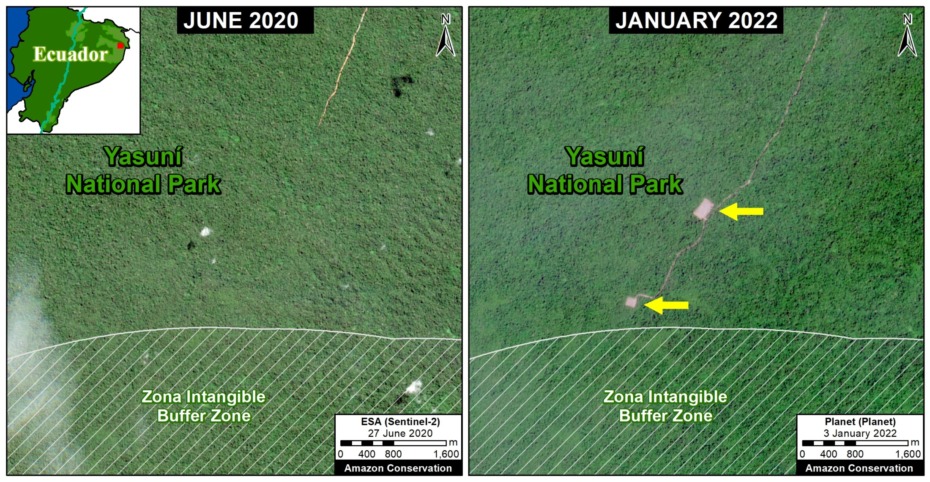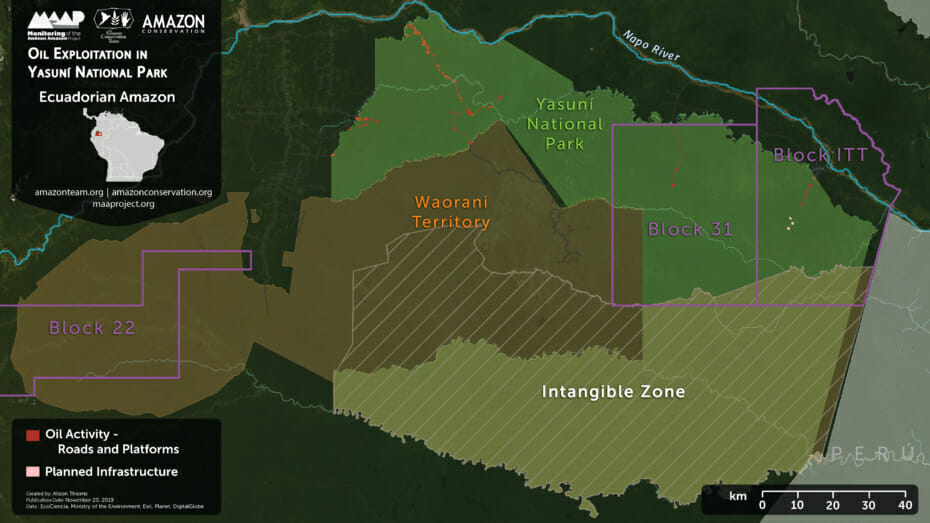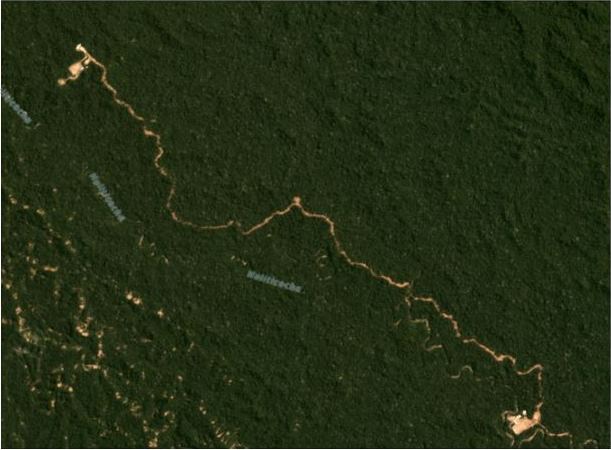
Yasuni National Park, located in the heart of the Ecuadorian Amazon, is one of the most biodiverse places in the world thanks to its unique location at the intersection of the Amazon, Andes Mountains, and the equator (see Base Map).
In addition, it is part of the ancestral territory of the Waorani indigenous peoples. The entire southern portion of Yasuni National Park has been declared an Untouchable Zone (Zona Intangible) to protect the territory of the relatives of the Waorani who live in voluntary isolation (Tagaeri-Taromenane).
In a series of previous reports, we have shown the construction of oil drilling platforms (and associated access road) in the ITT Block. This controversial block, run by the state oil company Petroecuador, is located in the remote and largely intact northeast sector of Yasuni National Park.
In this report, based on the latest satellite images, we show the most recent construction within the ITT Block: an oil drilling platform known as Ishpingo B. This platform is located just 300 meters from the buffer zone of the Zona Intangible.
We also issue a warning about the future construction of additional oil drilling platforms that would enter the buffer zone and reach the limit of the Zona Intangible itself.
Ishpingo Platforms A & B
The following images show the construction of the two new oil drilling platforms (Ishpingo A and B) in the heart of the Yasuni National Park (ITT Block).
Image 1 (on the right) shows that the newest and southernmost platform (Ishpingo B) is located just 300 meters from the buffer zone of the Zona Intangible.
Image 2 (below) shows the construction of the two new platforms and associated access road between June 2020 (left panel) and January 2022 (right panel).
It is worth mentioning that the construction of these platforms has a corresponding environmental license in accordance with the “Environmental Impact Study and Environmental Management Plan of the Ishpingo North Development and Production Project.”
Towards the Zona Intangible
Image 3 shows (in red) the location of the two new platforms (Ishpingo A and B) in relation to Yasuni National Park and the Zona Intangible.
Once again, note that the newest and southernmost platform (Ishpingo B) is located just 300 meters from the buffer zone of the Zona Intangible.
Alert: It is critical to emphasize that a previous version of the Environmental Impact Study includes plans for the construction of eight additional platforms (Ishpingo C-J), all located within the buffer zone towards the limit of the Zona Intangible Zone.
In fact, in early 2022, the head of Petroecuador has begun to publicly state the importance of moving forward with these extremely controversial plans.
Acknowledgments
We thank M. Bayón and P. Bermeo for useful information about the Environmental Impact Studies.
This report is part of a series focused on the Ecuadorian Amazon through a strategic collaboration between the organizations Fundación EcoCiencia and Amazon Conservation, with the support of the Norwegian Agency for Development Cooperation (Norad) and the International Conservation Fund of Canada (ICFC).
Citation
Finer M, Mamani N, Josse C, Villacis S (2022) New Oil Platforms Deeper into Yasuni National Park (Ecuador), towards Uncontacted Indigenous Zone. MAAP: 150.





































